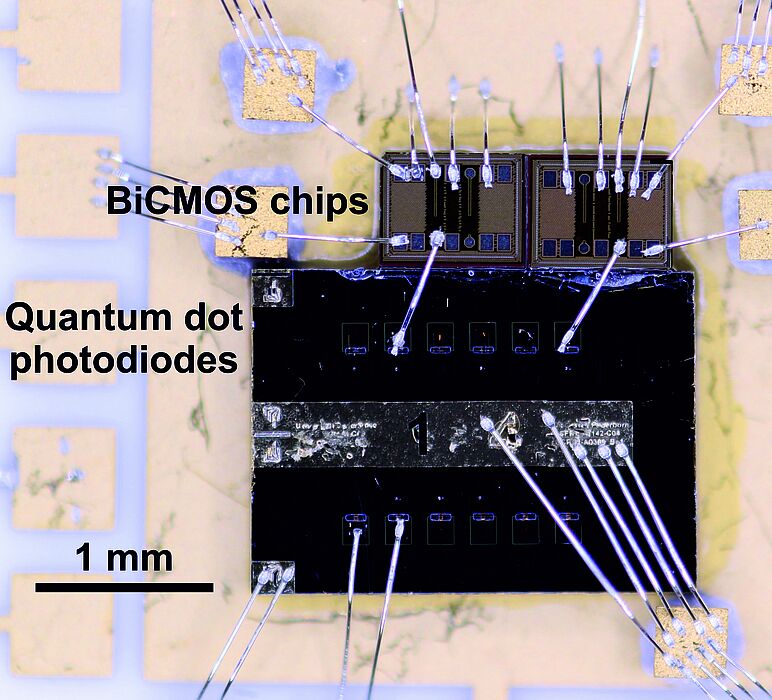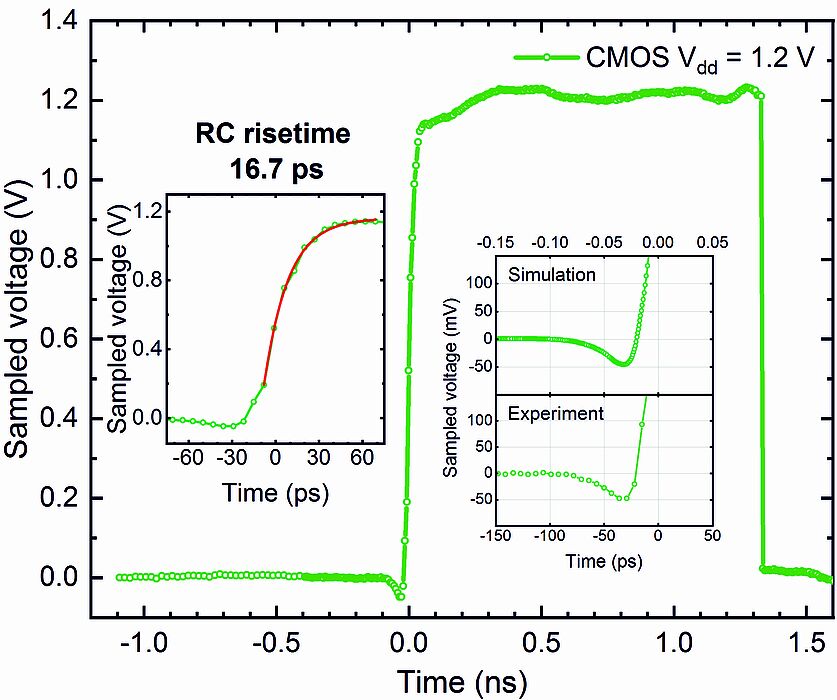In single quantum dot photodiodes, the energy of the ground state transition can be precisely tuned via the Stark effect. Using resonant ps laser excitation and the bias-dependence of the obtained population in a quantum dot, we have been able to demonstrate optoelectronic sampling of ultrafast electric pulses with mV voltage resolution. To achieve this, we have realized low capacitance photodiodes, which are connected to ultrafast BiCMOS circuits. A laser-synchronous electric pulse with variable delay is used as transient bias voltage supplied at the front contact of the photodiode, acting as input of the sampling device. For each set delay, the exciton energy is tuned to resonance with the ps laser excitation by adjusting the bias on the back contact, monitored by photocurrent detection. Using this concept, we have been able to demonstrate precise optoelectronic sampling with a time resolution below 20 ps.
See original publication:
Optoelectronic sampling of ultrafast electric transients with single quantum dots
A. Widhalm, S. Krehs, D. Siebert, N.L. Sharma, T. Langer, B. Jonas, D. Reuter, A. Thiede, J. Förstner, A. Zrenner, Applied Physics Letters (2021), 119, pp. 181109


